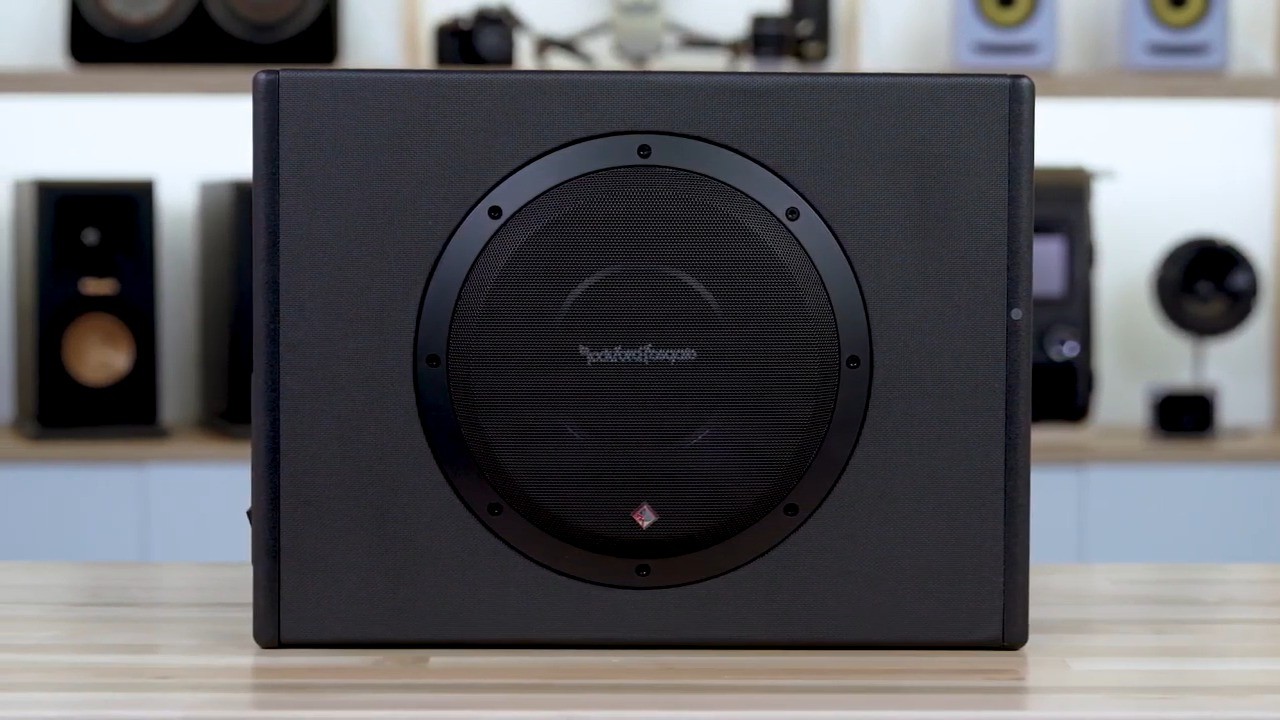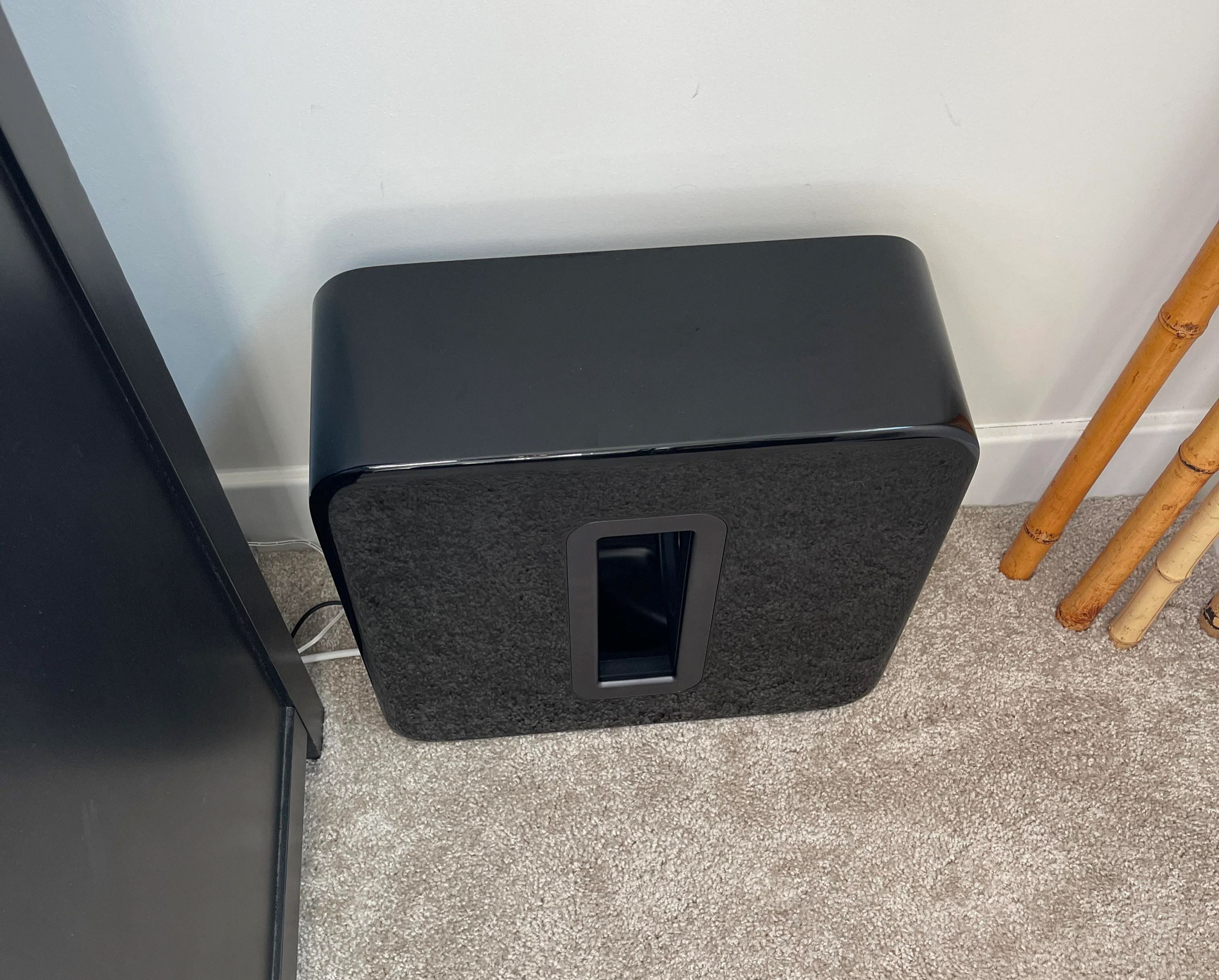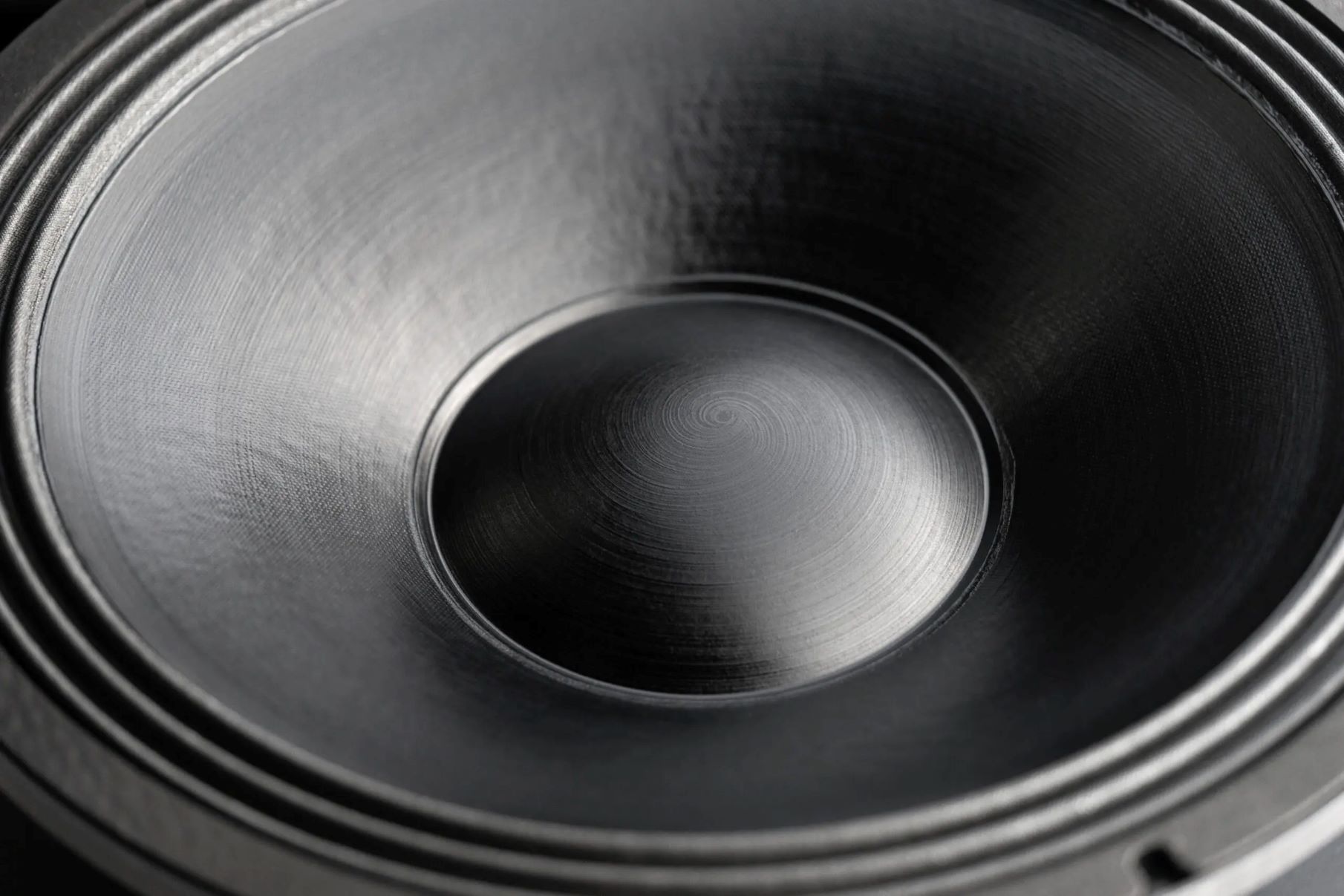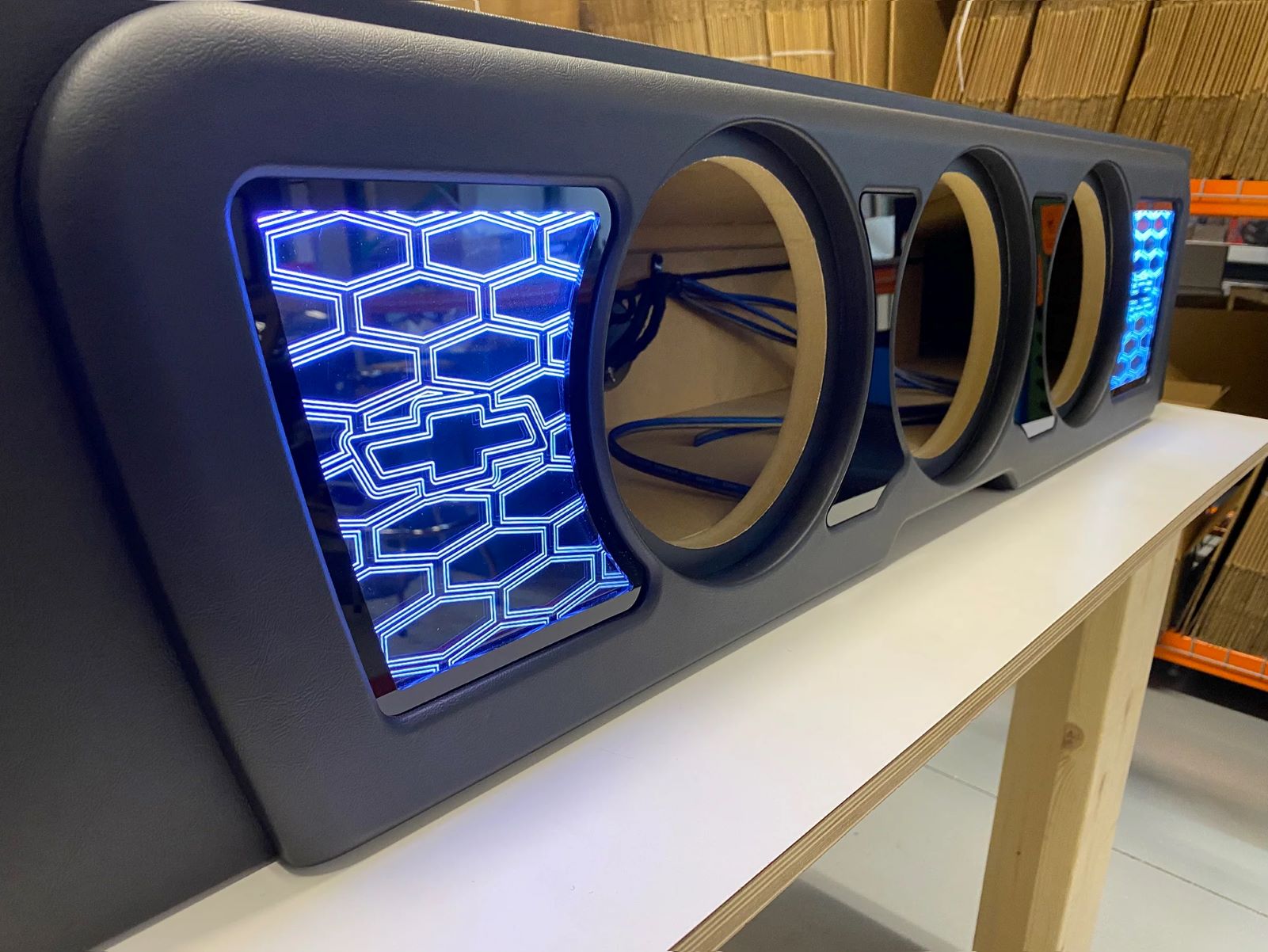Home>Instruments>Bass>How To Get More Bass From Subwoofer
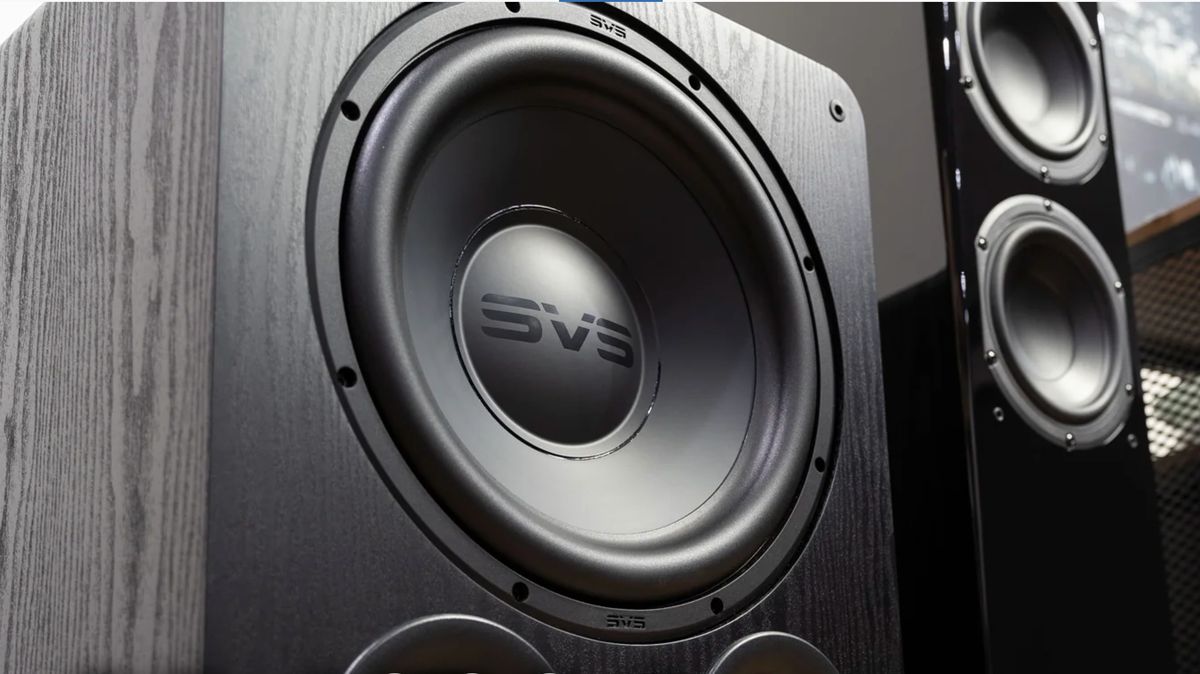

Bass
How To Get More Bass From Subwoofer
Modified: February 18, 2024
Learn how to get more bass from your subwoofer with our step-by-step guide. Enhance your audio experience and feel the deep, powerful vibrations.
(Many of the links in this article redirect to a specific reviewed product. Your purchase of these products through affiliate links helps to generate commission for AudioLover.com, at no extra cost. Learn more)
Table of Contents
- Introduction
- Understanding Subwoofers
- Choosing the Right Subwoofer for Your Setup
- Placement of the Subwoofer
- Adjusting the Subwoofer Settings
- Room Acoustics and Bass Response
- Enhancing Bass with Soundproofing and Isolation
- Upgrading Subwoofer Components
- Best Practices for Getting More Bass from Your Subwoofer
- Conclusion
Introduction
Welcome to the world of deep bass. Whether you’re a music enthusiast, an audiophile, or simply someone who loves to feel the music, getting more bass from your subwoofer can greatly enhance your audio experience. Blending seamlessly with your speakers, a subwoofer adds depth, power, and impact to your favorite tunes, movies, and games.
However, achieving optimal bass performance from your subwoofer requires a combination of factors, including understanding the fundamentals of subwoofers, choosing the right equipment, proper placement, and adjusting the settings. In this article, we will guide you through the process of getting the most out of your subwoofer and turning up the bass to new levels of excellence.
Before diving into the technical aspects, let’s take a moment to appreciate the importance of bass. Bass provides the foundation of sound, adding weight and richness to audio. It is responsible for reproducing low-frequency notes that bring life to music by creating rhythm, depth, and texture. In movies, bass delivers those heart-pounding explosions and intense rumble, transporting you into the on-screen action. Without adequate bass, audio can sound lackluster, thin, and unimpressive.
So, if you want to enhance your listening experience and make your music, movies, and games come alive, learning how to get more bass from your subwoofer is crucial. Whether you’re a beginner or an experienced bass lover, this guide will provide you with the knowledge and techniques to optimize your subwoofer’s performance and unlock the full potential of your audio system.
Understanding Subwoofers
Subwoofers are specialized speakers designed specifically to reproduce low-frequency sounds, typically ranging from 20Hz to 200Hz. These low-frequency sounds, often referred to as bass, are felt more than heard and add depth and realism to audio. Unlike regular speakers that handle a wide range of frequencies, subwoofers are dedicated to producing powerful and accurate bass.
Subwoofers consist of several key components that work together to deliver deep and impactful bass. The driver, or cone, is the main component responsible for creating sound. It moves back and forth rapidly, pushing air and producing the low-frequency waves we perceive as bass. The size of the driver influences the subwoofer’s ability to produce low frequencies, with larger drivers generally delivering deeper bass.
Another essential component is the amplifier, which powers the subwoofer and provides the necessary electrical signals to drive the driver. The amplifier’s quality and power output significantly impact the subwoofer’s performance. A powerful and efficient amplifier ensures that the subwoofer can handle low frequencies with accuracy and minimal distortion.
Subwoofers also incorporate an enclosure, which is a specially designed cabinet that houses the driver. The enclosure plays a critical role in shaping the subwoofer’s sound. Depending on the design, it can use different principles, such as ported or sealed, to enhance bass response and control airflow. The type of enclosure you choose will greatly affect the subwoofer’s overall sound quality and performance.
It’s important to note that subwoofers come in various configurations, including active and passive. Active subwoofers have a built-in amplifier and require a separate power source, while passive subwoofers rely on an external amplifier for power. Active subwoofers are generally more convenient and popular for home audio setups since they often have built-in controls and can be easily integrated with the main speakers.
Understanding the components and characteristics of subwoofers is essential when choosing the right one for your audio system. By considering factors such as driver size, amplifier power, enclosure design, and configuration, you can find a subwoofer that best suits your needs and delivers the low-end impact you desire.
Choosing the Right Subwoofer for Your Setup
Selecting the right subwoofer for your audio setup is crucial to achieve optimal bass performance. With a wide range of options available, it’s important to consider several factors before making a decision.
Firstly, determine the size of your room. The size of the room plays a significant role in subwoofer selection. Larger rooms require subwoofers with more power and larger drivers to fill the space with deep, immersive bass. On the other hand, smaller rooms may benefit from smaller and more compact subwoofers without sacrificing performance.
Next, consider the power and wattage of the subwoofer. Higher-powered subwoofers generally deliver louder and more impactful bass. However, it’s essential to match the power of the subwoofer with the power output of your amplifier to ensure compatibility and prevent overpowering or damaging your audio equipment.
Driver size is another crucial factor to consider. Larger drivers, such as 12-inch or 15-inch, offer deeper bass and greater output capabilities. Smaller drivers, like 8-inch or 10-inch, may be sufficient for smaller rooms or setups where space is limited. Choose a driver size that suits your listening preferences and the size of your room.
The type of enclosure is also important. Sealed enclosures provide accurate and tight bass, while ported enclosures offer more output and a boomy sound. Each has its own characteristics and effects on bass response. Consider your listening preferences and the type of music or movies you enjoy when choosing between sealed and ported enclosures.
Lastly, take into account the connectivity options and additional features. Subwoofers with adjustable settings, such as crossover frequency, phase control, and EQ adjustments, allow you to fine-tune the bass response to match your room’s acoustics and personal preferences. Additionally, some subwoofers offer wireless connectivity, making it easier to integrate them into your existing audio setup without the hassle of running cables.
By considering factors such as room size, power output, driver size, enclosure type, and additional features, you can choose a subwoofer that perfectly complements your existing audio setup and delivers the deep, powerful bass you crave. Keep in mind that it’s essential to strike a balance between the subwoofer’s capabilities, your budget, and your listening preferences to ensure a satisfying audio experience.
Placement of the Subwoofer
The placement of your subwoofer can significantly impact its performance and the overall bass response in your room. Proper placement ensures that the low-frequency sounds are evenly distributed and integrated with your main speakers. Here are some guidelines to consider when positioning your subwoofer:
1. The Rule of Thirds: One common approach is to place the subwoofer along one of the room’s walls, ideally at approximately one-third of the room’s length from the wall. This positioning helps reduce bass build-up in the corners and provides a more balanced bass response throughout the room.
2. Subwoofer-Listener Triangle: Aim to create an equilateral triangle between the subwoofer and the main listening position. Ideally, the distance between the subwoofer and the listener should be the same as the distance between the two main speakers. This positioning helps maintain a cohesive and well-integrated soundstage.
3. Experiment with Placement: While the previous guidelines are a good starting point, room acoustics and individual setups vary. Experiment with different subwoofer positions to find the spot that delivers the best bass response in your specific room. Move the subwoofer around and listen for changes in bass quality and overall sound balance.
4. Avoid Placing the Subwoofer in a Corner: Corner placements can exaggerate bass, resulting in boomy and overpowering low frequencies. If you have no other choice but to position the subwoofer in a corner, you might need to adjust the subwoofer settings and room treatments to control the bass response and reduce excessive resonance.
5. Consider Room Acoustic Treatments: Room acoustics play a crucial role in bass response. Hard surfaces and reflective materials can cause bass to bounce around the room, resulting in inconsistent and muddled bass. Adding acoustic treatments such as bass traps, diffusers, and absorbers can help improve bass control and clarity. Experimenting with room treatments in conjunction with subwoofer placement can lead to better overall sound quality.
Remember, the ideal subwoofer placement will depend on the characteristics of your room and your personal listening preferences. Take the time to make small adjustments and listen carefully to find the position that provides the most balanced and impactful bass response in your specific environment.
Adjusting the Subwoofer Settings
Once you’ve placed your subwoofer in the optimal position, it’s time to fine-tune its settings to achieve the best possible bass performance. Most subwoofers come with various adjustable controls that allow you to customize the bass response according to your preferences and room acoustics. Here are some key settings to consider:
1. Crossover Frequency: The crossover frequency determines the point at which the subwoofer takes over bass reproduction from the main speakers. Set the crossover frequency based on the capabilities of your main speakers and their ability to reproduce low frequencies. A good starting point is to set the crossover frequency around 80Hz, as this is the recommended frequency for most speakers.
2. Phase Control: The phase control allows you to align the phase of the subwoofer’s sound waves with those of the other speakers in your system. This ensures coherent and well-integrated bass. Experiment with the phase control by listening to different settings and selecting the one that provides the most precise and punchy bass response.
3. Volume or Gain Control: The volume or gain control adjusts the output level of the subwoofer. Set the volume to a level that complements the overall sound balance in your system. Be cautious not to overpower the main speakers or create an unbalanced soundstage. Start with the volume control set at its halfway point and make adjustments as needed.
4. EQ Adjustments: Some subwoofers offer equalizer (EQ) adjustments, allowing you to further tailor the bass response to your liking. EQ adjustments can help compensate for any room-related anomalies or personal preferences. Experiment with the EQ settings, making subtle adjustments to fine-tune the bass according to your listening environment and preferences.
5. Distance and Delay: Depending on your subwoofer and audio system, there may be options to adjust distance and delay settings. These settings help ensure that the subwoofer’s sound arrives at the listening position in sync with the main speakers. Consult your subwoofer’s manual or refer to the manufacturer’s instructions for the correct procedure to set these parameters.
It’s important to note that adjusting subwoofer settings is a subjective process and may require some trial and error. Take your time to listen to different settings, make small adjustments, and trust your ears. It’s also helpful to have some reference tracks or movies with deep bass to evaluate the impact of your adjustments.
If you find it challenging to adjust the settings on your own, consider using calibration tools or hiring a professional to help optimize your subwoofer’s performance. Properly adjusting the subwoofer settings ensures that it seamlessly integrates with your main speakers, providing a cohesive and immersive audio experience with accurate and impactful bass.
Room Acoustics and Bass Response
Room acoustics play a critical role in how bass frequencies are perceived and reproduced. The size, shape, and furnishings of your room can significantly affect the bass response, potentially causing issues such as boomy bass, standing waves, or uneven frequency distribution. Understanding room acoustics and implementing appropriate solutions can greatly enhance the overall bass performance. Here’s what you need to know:
1. Standing Waves: One common issue in rooms is the occurrence of standing waves, which are resonances caused by sound waves bouncing between the walls. Standing waves can result in peaks and nulls in the bass response, leading to uneven bass distribution. To mitigate this, consider adding bass traps or low-frequency absorbers in the corners of your room to reduce standing wave reflections and create a more balanced sound.
2. Reflections and Absorption: Hard surfaces, such as bare walls, floors, and ceilings, can cause sound reflections, leading to uneven bass and potential echoes. Incorporating acoustic panels or diffusers can help control reflections and absorb excessive bass energy. Placing absorptive panels strategically around the room can help achieve a more controlled and accurate bass response.
3. Room Size and Shape: The size and shape of your room can also impact bass performance. Larger rooms may suffer from bass decay, where low frequencies lose energy and impact as they travel through the space. In contrast, smaller rooms can experience excessive bass buildup and reinforcement. Acoustic treatments, such as bass traps and diffusers, can help address these issues and create a more balanced and controlled bass response.
4. Speaker Placement: The location of your main speakers within the room can affect bass response. Placing the speakers too close to walls or corners can result in exaggerated bass, while positioning them too far from walls may lead to weak bass. Experiment with different speaker placements and listen for changes in bass quality to find the optimal position that minimizes bass issues and provides a well-balanced audio experience.
5. Subwoofer-Speaker Integration: Ensuring proper integration between the subwoofer and the main speakers is crucial for a seamless bass response. Take the time to properly set the crossover frequency and adjust the phase of the subwoofer to align the bass output with the main speakers. This integration helps create a cohesive soundstage and prevents any gaps or frequency overlaps in the bass frequencies.
Understanding the impact of room acoustics on bass response is essential for achieving the best possible audio experience. Implementing appropriate acoustic treatments, optimizing speaker placement, and ensuring proper subwoofer-speaker integration will result in a more accurate, balanced, and immersive bass performance.
Enhancing Bass with Soundproofing and Isolation
When it comes to enhancing bass performance, soundproofing and isolation techniques can play a vital role. These methods help minimize external noise interference and improve the overall clarity and impact of the bass. Here’s how you can enhance bass with soundproofing and isolation:
1. Reduce External Noise: External noise, such as street traffic or neighbors, can negatively impact your listening experience and mask the subtle details of the bass frequencies. Soundproofing techniques, such as adding heavy curtains, acoustic panels, or soundproofing foam to windows and doors, can help block out unwanted noise and create a quieter listening environment.
2. Isolate Vibrations: Vibrations from speakers and subwoofers can transmit through the floor and walls, causing distortion and affecting bass quality. To isolate these vibrations, consider using decoupling materials, such as isolation pads or specially designed speaker platforms, to separate the speakers or subwoofer from the surface they are placed on. This helps prevent vibrations from transferring and impacting the bass response.
3. Subwoofer Placement and Isolation: Placing the subwoofer on a solid, stable surface can improve bass performance. However, if the surface is prone to resonances or vibrations, it could affect the accuracy of the bass. Using isolation platforms or specialized subwoofer stands can help isolate the subwoofer, minimizing the transfer of vibrations and preventing interference with the bass response.
4. Bass Traps and Acoustic Panels: Incorporating bass traps and acoustic panels in your listening room can help control bass reflections and reduce unwanted resonances. Bass traps are designed to absorb low-frequency sound waves, preventing reflections and smoothing out the bass response. Acoustic panels help absorb mid and high-frequency reflections, further enhancing the clarity and impact of the bass frequencies.
5. Sealing Air Leaks: Air leaks in your room can not only impact temperature control but also affect bass performance. These leaks can allow sound to escape or external noise to enter, leading to a less immersive bass experience. Identify and seal any gaps or cracks in windows, doors, or walls to create a more airtight environment that improves bass reproduction and reduces unwanted interference.
Remember that soundproofing and isolation techniques should be used in conjunction with other optimization methods, such as proper speaker and subwoofer placement, to achieve the best results. By implementing these techniques, you can minimize external distractions, isolate vibrations, and create an acoustically favorable environment for enhanced bass performance.
Upgrading Subwoofer Components
If you’re looking to take your bass performance to the next level, upgrading certain components of your subwoofer can have a significant impact. Upgrading these components can improve the overall sound quality, enhance bass response, and provide a more immersive listening experience. Here are some key components to consider upgrading:
1. Subwoofer Driver: The driver is the heart of the subwoofer, responsible for producing sound. Upgrading to a higher-quality driver can result in cleaner and more accurate bass reproduction. Look for drivers that have advanced cone materials, improved motor structure, and higher power handling capabilities to achieve deeper and more impactful bass.
2. Amplifier: The amplifier powers the subwoofer and drives the driver, making it a critical component of the subwoofer. Upgrading to a more powerful and efficient amplifier can ensure that the subwoofer can handle low frequencies with ease and deliver cleaner and more dynamic bass. Look for amplifiers with high current output, low distortion, and advanced circuitry for optimal performance.
3. Enclosure: The enclosure plays a crucial role in shaping the bass response and overall sound quality of the subwoofer. Upgrading to a well-designed and properly constructed enclosure can improve bass accuracy and reduce resonance or distortion. Consider options such as sealed, ported, or even specialized enclosure designs like bandpass or transmission line to tailor the bass response to your specific preferences.
4. Internal Wiring and Connectors: Often overlooked, upgrading the internal wiring and connectors of your subwoofer can improve signal transfer and minimize signal loss or interference. High-quality, oxygen-free copper wiring and robust connectors can ensure a clean and uninterrupted signal flow, resulting in improved bass performance and overall audio quality.
5. Subwoofer Cables: Using high-quality subwoofer cables to connect the subwoofer to the amplifier or receiver can make a noticeable difference in sound quality. Look for cables with solid conductors, shielding, and tight connections to minimize signal loss and ensure a clean transmission of low-frequency signals.
It’s important to note that not all subwoofers are easily upgradable, and some manufacturers restrict component modifications. Be sure to check the compatibility and ease of upgrading before attempting any modifications. Additionally, consider the cost-benefit analysis of upgrading components compared to investing in a higher-quality subwoofer that already incorporates these features.
By selectively upgrading subwoofer components, you can tailor the performance to suit your specific needs and achieve a more refined and immersive bass experience. However, it’s important to do thorough research, consult with experts, and ensure proper compatibility when making these upgrades.
Best Practices for Getting More Bass from Your Subwoofer
If you’re looking to get the most out of your subwoofer and maximize its bass performance, here are some best practices to consider:
1. Experiment with Placement: Proper placement of your subwoofer is essential for optimal bass response. Experiment with different positions in the room to find the spot that provides the best bass performance. Use the Rule of Thirds and the Subwoofer-Listener Triangle as guidelines, but don’t hesitate to make small adjustments based on your specific room and listening preferences.
2. Fine-Tune the Settings: Adjust the subwoofer settings, such as crossover frequency, phase control, and volume/gain, to achieve the best bass balance. Start with conservative settings and make gradual adjustments while listening to different tracks or movies with deep bass. Trust your ears and find the settings that provide the most accurate and impactful bass response for your room and audio system.
3. Consider Room Acoustics: Room acoustics greatly influence bass performance. Pay attention to the size, shape, and furnishings of your room. Use bass traps, diffusers, and absorbers strategically to control reflections, reduce standing waves, and achieve a more balanced and controlled bass response. If possible, add soundproofing and isolation techniques to minimize external noise interference and improve bass clarity.
4. Optimize Speaker-Subwoofer Integration: Ensure proper integration between the subwoofer and the main speakers. Set the crossover frequency and adjust the phase control to align the subwoofer’s output with the main speakers. This integration helps create a cohesive soundstage and prevents any frequency gaps or overlaps in the bass frequencies.
5. Use Quality Source Material: High-quality source material is essential for experiencing deep and impactful bass. Make sure you’re listening to well-recorded tracks or watching movies with impressive sound design. Look for music or movies that are specifically mixed for optimizing bass performance. Streaming platforms and Blu-ray discs often provide higher-quality audio formats, allowing you to fully enjoy the potential of your subwoofer.
6. Avoid Overdriving the Subwoofer: While it can be tempting to crank up the volume and push your subwoofer to the limits, it’s important to avoid overdriving it. Overdriving can lead to distortion, damage to the subwoofer, and even affect the overall audio system. Find the balance between enjoying powerful bass and maintaining the integrity of your equipment.
7. Regularly Maintain and Clean the Subwoofer: Keep your subwoofer in good condition by regularly maintaining and cleaning it. Dust can accumulate on the driver and affect its performance. Follow the manufacturer’s instructions on cleaning and maintenance to ensure the subwoofer operates at its best.
Remember that achieving the ideal bass performance is subjective and dependent on personal preferences and room conditions. Take the time to experiment, make small adjustments, and listen critically to find the settings and practices that provide the most satisfying bass experience for you and your audio system.
Conclusion
Getting more bass from your subwoofer is an exciting journey that can greatly enhance your audio experience. By understanding the fundamentals of subwoofers, choosing the right equipment, optimizing placement, and adjusting settings, you can unlock the full potential of your subwoofer and enjoy deep and impactful bass.
Understanding the components of a subwoofer and their role in bass reproduction is crucial. By selecting the right size, power, and enclosure type, you can ensure that your subwoofer is capable of delivering the low-frequency sound you desire. Placing the subwoofer in an optimal position and considering room acoustics helps create a well-balanced and immersive bass experience, while adjusting the subwoofer settings tailors the bass response to your specific preferences and room conditions.
Soundproofing and isolation techniques can further enhance bass performance by minimizing external noise interference and isolating vibrations. Upgrading subwoofer components, such as the driver, amplifier, and internal wiring, can also take your bass to the next level, but careful consideration and compatibility are necessary.
By following best practices such as experimenting with placement, fine-tuning settings, optimizing integration with main speakers, using quality source material, and properly maintaining the subwoofer, you can achieve the best possible bass performance.
Remember that everyone’s audio setup and preferences are unique, so it’s important to trust your ears and make adjustments based on your personal listening experience. Enjoy the journey of exploring the depths of bass, and let the power and impact of your subwoofer bring your music, movies, and games to life.


